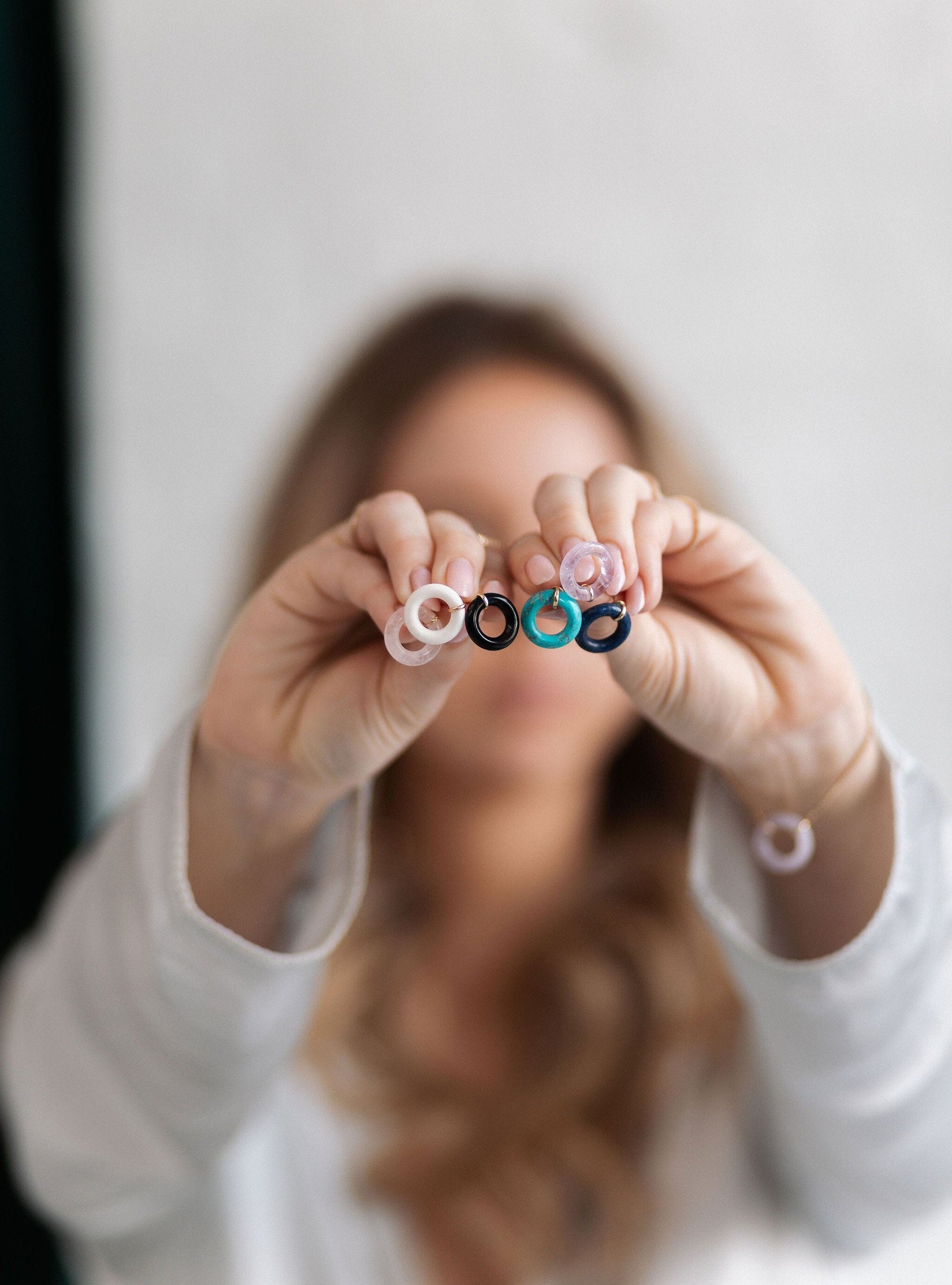Introduction: Why Great Jewelry Photography Matters
In today's digital world, high-quality jewelry photography is crucial for showcasing your pieces, whether you're a professional jeweler or a passionate collector. Beautiful photos not only capture the intricate details of your jewelry collection but also enhance its perceived value. Whether you're photographing a bridal jewelry set or a piece from your vintage jewelry collection, the right techniques can make your jewelry shine both online and offline.
Photographing jewelry, however, isn't as simple as pointing and shooting. Jewelry is often small, reflective, and filled with tiny details that require special attention to lighting, angles, and camera settings. This guide will walk you through all the photography tips & tricks you need to capture stunning images of your jewelry.

Preparing Your Jewelry for a Photo Shoot
Clean and Polish Your Jewelry
Before you start shooting, it's essential to ensure that every piece in your jewelry collection is spotless. Even the tiniest smudge or fingerprint can be picked up by the camera, ruining an otherwise perfect shot. Use a microfiber cloth to gently clean your jewelry, removing any dust or smudges. This step is especially important when photographing items like a bridal jewelry set, where the smallest details need to sparkle.
For more delicate pieces, such as those in a vintage jewelry collection, take extra care to clean them without damaging the materials. If you're shooting gold or gemstones, consider using specialized cleaning solutions to enhance their shine.
Choosing the Perfect Backdrop
The backdrop you choose can dramatically affect the outcome of your jewelry photography. While platforms like Amazon often require a plain white background, you have more creative freedom for your personal or brand website. The key is to choose a backdrop that complements your jewelry without overpowering it.
For minimalist jewelry, such as a jewelry set for women that is simple and elegant, a soft cream or dove gray backdrop can be perfect. On the other hand, if you're photographing bold and colorful pieces, don't be afraid to use more vibrant backdrops that make your jewelry pop.

Setting Up Your Photography Space
The Role of Lighting in Jewelry Photography
One of the most critical photo lighting tips for jewelry photography is to use natural light whenever possible. Natural light provides a soft and even illumination that helps bring out the details in your jewelry. However, direct sunlight can create harsh shadows and reflections, so it's best to shoot during the early morning or late afternoon when the light is softer.
If natural light isn't an option, consider investing in softbox lighting, which can mimic natural light and reduce harsh shadows. Whether you're photographing a bridal jewelry set or a piece from the jewelry 70s era, the right lighting will make all the difference.
Selecting the Right Camera and Lens
While you can capture decent photos with a smartphone, investing in a good camera can significantly enhance your results. A DSLR or mirrorless camera with a macro lens is ideal for jewelry photography because it allows you to capture fine details with sharp focus. If you're using a smartphone, make sure to apply photography tips on iphone such as using the macro setting or attaching a macro lens.
Regardless of the camera you use, always stabilize your shots with a tripod. This ensures that your images are sharp and free from motion blur, which is especially important when photographing small objects like jewelry.

Creating a Shot List for Your Jewelry Collection
Essential Angles to Capture
When photographing your jewelry collection, it's important to showcase each piece from multiple angles. This not only helps potential buyers see all the details but also gives your photos a professional edge. At a minimum, include the following shots for each piece:
The Hero Shot
A hero shot is a front-facing image that captures the entire piece of jewelry, highlighting its overall design and features. It serves as the primary image, often used on product pages to create a strong first impression.
Backside
A backside shot shows the reverse side of the jewelry, revealing important details like craftsmanship, closures, or engravings, which help build trust with potential buyers.
Details of Any Jewels
Close-up shots focus on gemstones or intricate details, allowing customers to appreciate the craftsmanship and quality of the materials, which is essential for online shopping.
Clasp
A clasp shot provides a clear view of the jewelry's fastening mechanism, demonstrating its functionality and ensuring buyers of its quality and ease of use.
Lifestyle Images
Lifestyle images show the jewelry being worn, providing context, scale, and helping customers visualize how the piece will complement different outfits or styles.
Using Sand or Putty
Use a small amount of sand or putty to stabilize jewelry pieces during the shoot, keeping them upright and perfectly positioned for the best possible shot.

Adding Variety with Lifestyle Shots
Lifestyle images are a great way to showcase how your jewelry looks when worn. This is particularly effective for pieces like a bridal jewelry set, where potential buyers want to visualize how the jewelry will look on their special day. Use diverse models to reflect the inclusivity of your brand and to appeal to a broader audience.
Incorporate flat lay photography into your shoot for an additional layer of creativity. Arrange your jewelry alongside complementary items like a vintage book or fresh flowers to create a cohesive and visually appealing scene.
Common Jewelry Photography Mistakes and How to Avoid Them
Managing Reflections and Glare
One of the biggest challenges in jewelry photography is managing reflections. Jewelry often has shiny surfaces that can reflect unwanted elements, such as the camera lens or even the photographer's hand. To minimize reflections, use a reflector or white card to bounce light onto the jewelry and soften harsh reflections.
If you still encounter reflections, consider editing them out during post-production. There are several photography editing tips you can use to enhance your images, such as adjusting the brightness and contrast or using software like Photoshop to remove imperfections.
Consistency in Your Photography Style
Maintaining a consistent style across all your jewelry photos is crucial for building a strong brand identity. Whether you're shooting a vintage jewelry collection or a modern jewelry set for women, consistency in lighting, background, and angles will make your collection look cohesive and professional.
Create a moodboard to define your brand's color palette and style. Refer to it before every shoot to ensure your photos align with your brand’s visual identity. This is one of the most important basic photography tips for anyone looking to build a successful online presence.

Enhancing Your Jewelry Photos in Post-Production
Basic Photo Editing Tips
Once you've captured your images, it's time to polish them with some photography editing tips. Start by adjusting the exposure to ensure the jewelry is well-lit but not overexposed. Next, tweak the contrast to make the jewelry stand out against the background. Sharpening is also crucial, especially for close-up shots, to bring out the intricate details.
For those looking to take their editing skills to the next level, consider using software like Adobe Lightroom or Photoshop. These programs offer advanced tools for color correction, retouching, and enhancing the overall look of your jewelry photos.
Advanced Techniques for Flawless Images
If you're aiming for perfection, advanced editing techniques can help you achieve flawless images. Use the clone tool in Photoshop to remove any remaining blemishes or imperfections. You can also experiment with the bokeh effect by adjusting the depth of field (using the f-stop settings) to blur the background and make your jewelry the focal point.
If editing isn't your strong suit, hiring a professional photo editor is a worthwhile investment. This ensures that your jewelry photos are polished and ready for any platform, whether it's your website, social media, or an eCommerce marketplace.
Showcasing Your Jewelry Photos Online
Optimizing Images for Your Website
Once your photos are ready, it's time to showcase them online. Start by resizing your images to ensure they load quickly on your website without losing quality. Compressed images not only improve the user experience but also boost your SEO rankings. Remember to add alt text to each image, using relevant keywords like jewelry photography and bridal jewelry set to make your photos more searchable.
Consistency is also key when displaying your photos on your website. Use the same lighting and background style across all product images to create a cohesive look that reflects your brand identity.
Sharing Your Photos on Social Media
Social media is a powerful platform for showcasing your jewelry, so make the most of it by sharing your best photos. Use Instagram and Pinterest to create visually appealing posts that highlight different aspects of your jewelry collection. Experiment with short-form video content on TikTok and Instagram Reels to engage your audience further.
Include a mix of product shots, lifestyle images, and behind-the-scenes content to keep your feed dynamic and interesting. And don’t forget to use relevant hashtags to increase your visibility and attract more followers.

Conclusion: Elevate Your Jewelry Photography Game
Great jewelry photography is both an art and a science. By following these photography tips & tricks, you can capture stunning images that do justice to your jewelry. Whether you're photographing a vintage jewelry collection, a bridal jewelry set, or a modern jewelry set for women, the right techniques can make all the difference. Remember, the key to successful jewelry photography is preparation, consistency, and a bit of creativity. So grab your camera, set up your perfect lighting, and start showcasing your jewelry in the best possible light.




